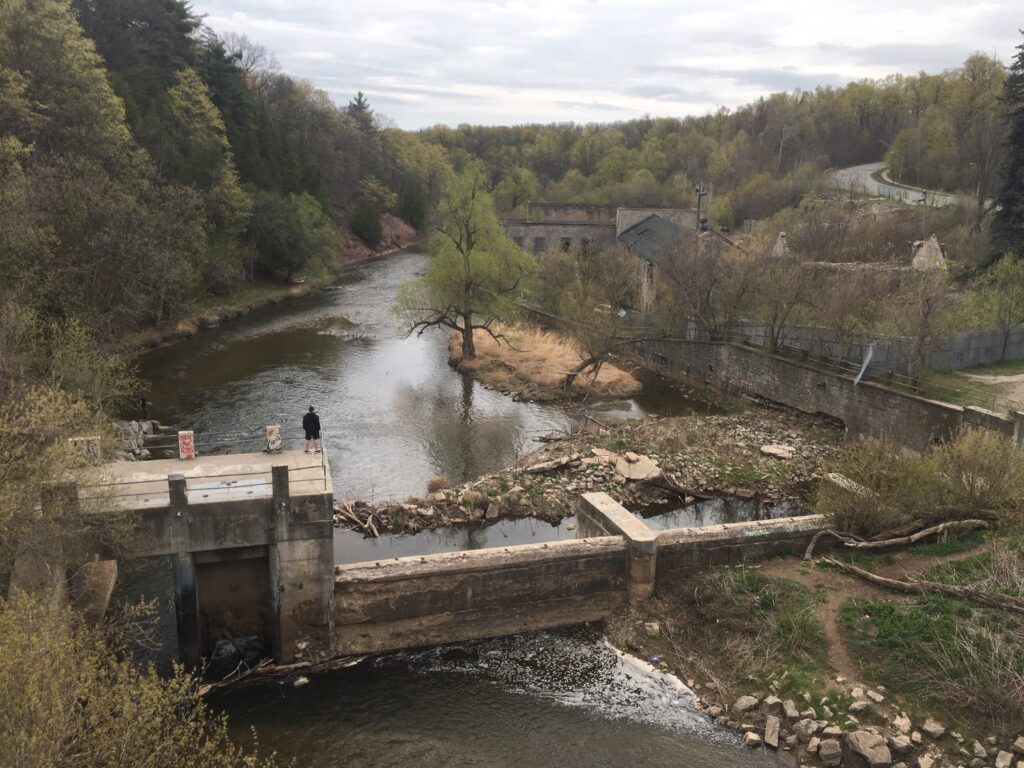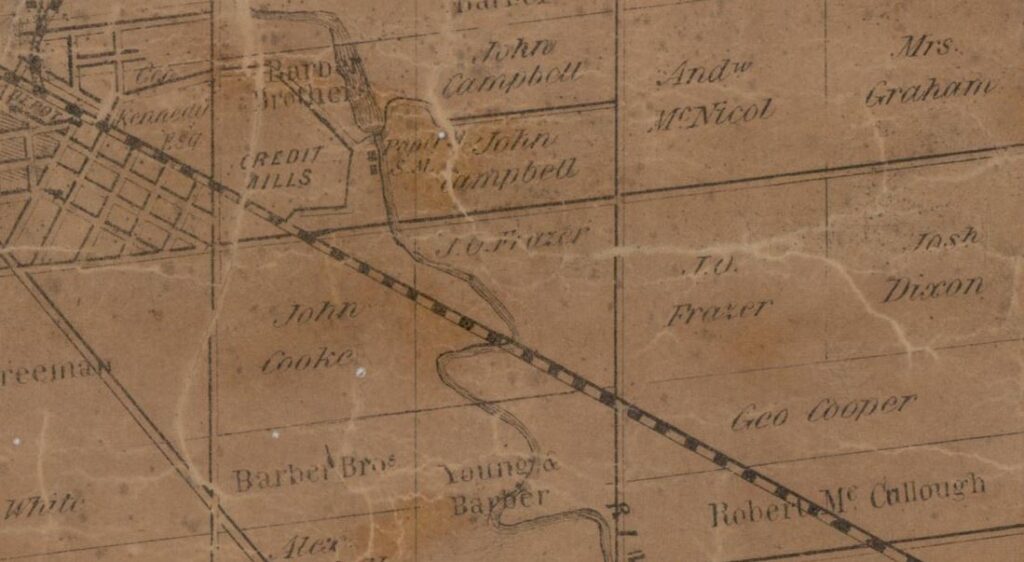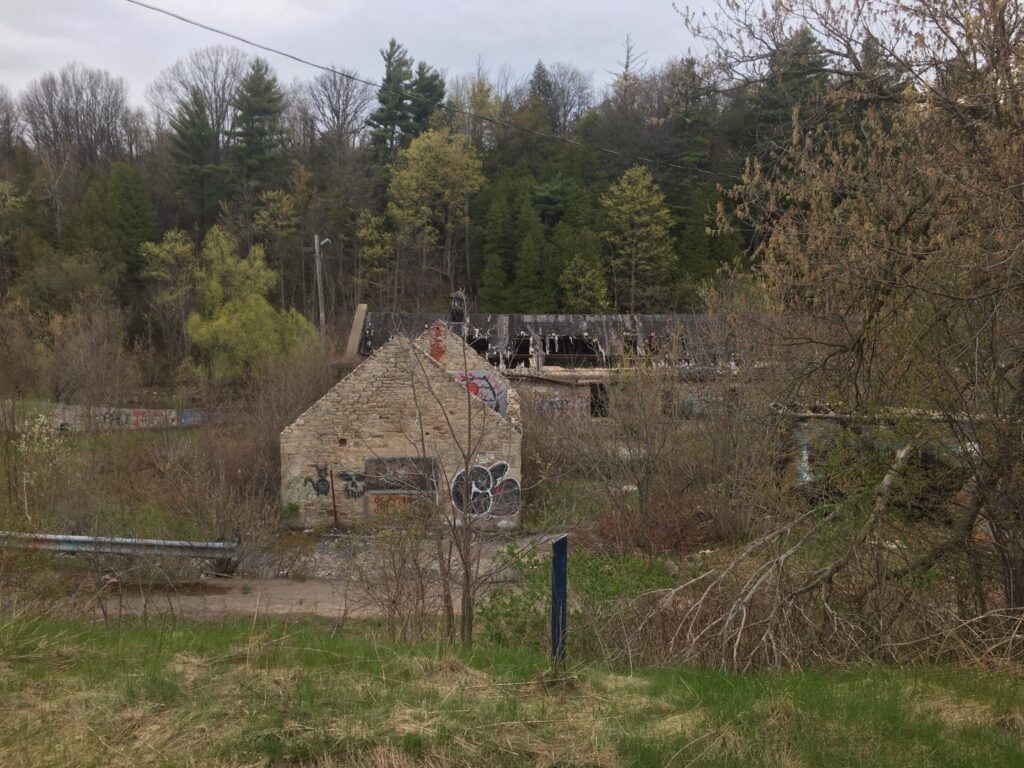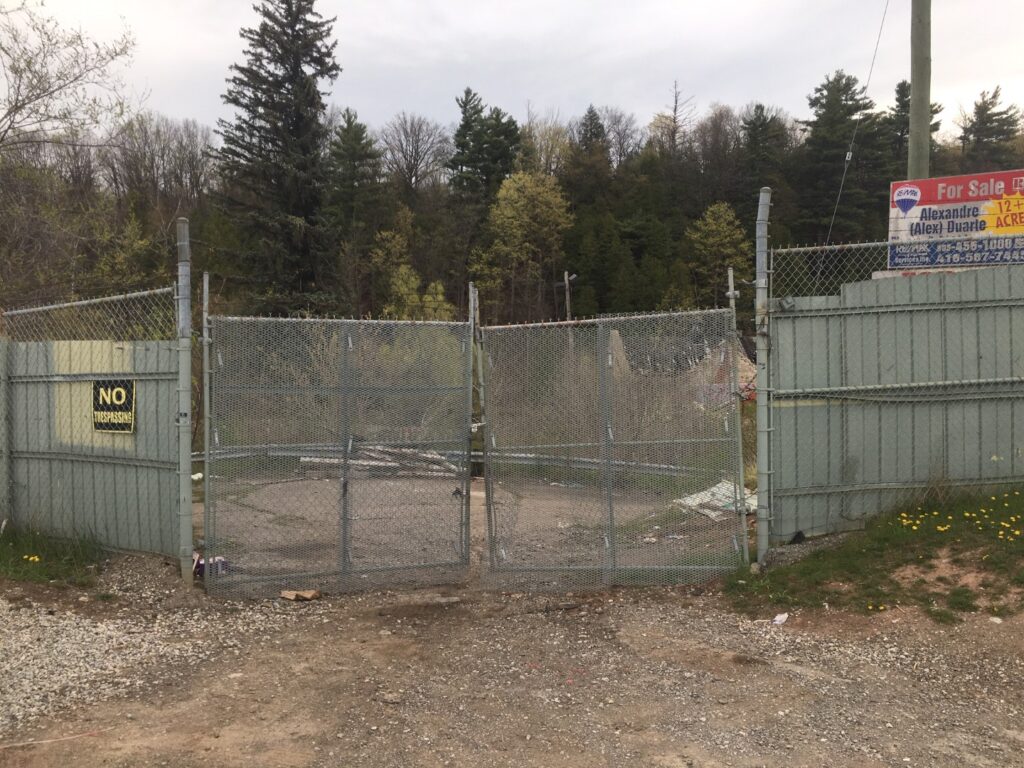During its years of operations, the Barber Mill was once one of the largest industries in the county of Halton. Established by the Barber Family, one of the first European families to settle in the area, the legacy of the mill began over 150 years ago. Today this complex of stone and brick buildings, warehouses, and storage sheds can still be found along the banks of the Credit River in the small town of Georgetown but now it has earned the new title as one of the most well-known abandoned buildings in southern Ontario. It has also become a classic example of demolition by neglect, where its owners have seemed to purposely let this historic structure fall into disrepair with no hope of it being restored.

The Barbers
The Barber family had been involved in woolen milling in Georgetown since 1837. Building upon the success of previous mills James Barber established a mill along the Credit River in 1854. The mill was comprised of a complex of brick and limestone buildings located adjacent to the Credit River which provided power to the mill’s operation. The mill began as a rag paper mill which is known as a rag or cotton paper from linen rags and cotton. As with many mills at the time, by 1869 the mill had been converted to produce paper from wood pulp which it continued to do until its closure.
In 1861, James Barber appointed his son, John as plant manager. John Roaf Barber had originally planned to attend the Royal Military College in England but after his father established the mill he abandoned this dream to help the family-run business. By 1869, John’s work led him to become the sole proprietor of the mill, and following his father’s death in 1880, John became the sole owner of the mill and family business.

In 1876, John’s brother, James and James’ business partner, John Fitzallen Ellis of Brantford established the Barber and Ellis Company. Officially incorporated in 1883, the business was based in Toronto and soon John Barber purchased a controlling interest in the company, becoming the company’s president. In doing this John and his Georgetown paper mill were now one of the largest manufacturers and wholesalers of stationary in the dominion. The emerging demand for paper across the region quickly became clear to John but soon it wasn’t demand limiting John and the Barber mill from growing it was a technological problem; power.
At the time, the Barber mill obtained its power from a nearby dam on the Credit River. But with the dam’s hydropower at its limits, the mill began experiencing a problem that affected mills around the world which was a dam could only produce so much power and long-distance power transfer was still not feasible because of the amount of power lost distributing it across even small distances.
The Dynamo
John was well aware of this problem but also new and emerging technologies. With the ambition of getting more from his Georgetown Mill, John hired the Cleveland-based company, Brush Electric Company to build a 100 horsepower electric generator and a 60 horsepower direct current motor that was to be placed in a stone building constructed three kilometers downstream of the Barber mill. The resultant machine is known as a dynamo, which is a technical term for a generator that creates direct current using a rotary switch also known as a commutator which assures power always flows in one direction. With the mechanical aid of the river, power produced at the dynamo was then transferred to the Barber Mill via two electrical wires.
The Barber Dynamo was a considerable feat in power distribution and has been called one of the first long-distance electrical transmissions of hydroelectric power for industrial purposes in North America. While it may sound very specific, it set a new milestone and technological achievement for the industry in North America.
The Dynamo went into operation in 1888 and was run by a single operator, James Charles Alexander who maintained this position for his whole career.

Booming Business
With the paper business booming Barber started construction on another mill in 1905. With power now available from the Sir Adam Beck Generating Station in Niagara Falls, the new mill was built above the river closer to town. The new mill soon became known as the Upper Mill with the original Barber Mill becoming known as the Lower Mills. In 1912, Barber created the Provincial Paper Company which was to oversee both mill operations in Georgetown.
Throughout his career, John Barber helped establish Georgetown as the town it is today. Having served on numerous boards related to paper manufacturing across the country Barber continually promoted his business endeavors in Georgetown. By the early twentieth century, Barber had not only produced a successful paper industry but had also managed to serve in a local militia group and even became a Member of Provincial Parliament (MPP) for Halton Riding. In 1911, Barber suffered a heart attack and a year later announced his retirement.
John Roaf Barber passed away in 1917 at the age of 76. At the time of his death, he was praised as being the dean of the Canadian paper trade, and his funeral was described by one local newspaper as one of the largest ever seen.
From Here On
Provincial Papers ran the Lower Mill until November 15, 1948, when the mill was finally closed. After this, various companies occupied the mill until the 1970s when the complex of buildings and warehouses were left abandoned. Twenty years later, on March 31, 1991, the upper mill, now owned by Abitibi-Price was also closed leading columnist John Mark Rowe to sum up the closure by saying “Another chapter in Canada’s industrial story is finished”.

The End
In 2008 the 5.3-hectare complex of buildings was designated under the Ontario Heritage Act. The property was then purchased by Victor Boutin of Everlast Restoration Group (also known as Everlast Group Ltd.) who inspired by the historic, mixed-use districts of Quebec City, planned on incorporating the mill’s unique architecture and beautiful location to create a country inn, fine-dining restaurant, riverside cafes, art studio, and river access for kayaks and canoeist. The site would also contain a 14-story condominium that would overlook the river and surrounding forest.
After the proposal was submitted to the Town of Halton Hills the owner began experiencing problems in regard to soil contamination and unexpected deterioration of the mill’s buildings. By 2004, the North Halton Compass had reported over $500,000 was put into remediating the area in that year alone.
Meanwhile, aside from the cost and economic risk to the developers, local advocate groups began publicly speaking out against the project for the negative impacts both the development and construction would inevitably have on the local environment and fish populations. Bert Zonneveld, President of the Save our Ravines group expressed fears of disrupting and destroying the wildlife corridor that the valley possesses and used examples of nearby condominium developments whose construction alone disrupted and destroyed the local fish populations in surrounding ponds and wetlands.
The accumulating problems experienced by the developer eventually led to the project’s abandonment, leaving the mill once again to remain idle and left to deteriorate. Since then the Barber Mill has been neglected, putting it at great risk of vandalism, deterioration, and arson. In 2012, the municipality exercised the communities Property Standards Bylaw to force the site to be cleaned up and have a secure fence placed around the property to deter curious-minded people and unwanted visitors. But the mill’s abandonment has led to just another case of demolition by neglect, either accidental or on purpose. This led the country-wide built heritage preservation group, the National Trust for Canada to place the Barber Paper Mill on its endangered places list in 2015.
About the Area
The mill today has become a hot spot for urban explorers in the Greater Toronto Area. A fence installed in 2012 now prohibits visitors from entering the premise and it may be for the better, as the complex of buildings while architecturally beautiful have fallen into disrepair and are now at risk of collapse. In addition to this rotting wood, asbestos, and possible chemical contamination make the site dangerous to venture into.
Nonetheless, the mill remains a wonderful spectacle to see and take on. Located in the scenic Credit River Valley, the nearby dam and road bridge offer great vantage points for photographers.
As mentioned, nearby the old dam is now no longer used but remains relatively intact and provides a scenic lookout for those looking to get a closer insight into what lies beyond the chain link fence surrounding the mill.
Conclusion
Today the Barber Paper Mill continues to rise above the Credit River. While it remains hidden in the narrow river valley, the impact this mill has had on the surrounding communities will not soon be forgotten. The legacy of John R. Barber and his paper mills helped shape the local landscape and while the mill remains close in the hearts of those who live nearby, the mill stands as an engineering wonder that helped lead the region to become the prominent establishment it is today.
Sources and Further Exploring
Architecture Conservancy Ontario (n.d.). The Barber Paper Mill (1854). acontario.ca. Retrieved from https://www.acontario.ca/show_at_risk.php?r_id=34
Filter, R. (1977). The Barber Dynamo; A Perspective. Boston Mills Press: Erin, ON. Ed. 1(Jan. 1, 1977).
GeonMagazine (2021). The Barber Mill Dynamo in Georgetown. First in North America. Geonmagazine.com. Retrieved from https://geonmagazine.com/our-history/history-history/the-barber-mill-dynamo-first-in-north-america
Morrison, K.I. & Young, J. (2012). Halton Hills. The Canadian Encylopedia. Retrieved from https://www.thecanadianencyclopedia.ca/en/article/halton-hills
Rowe, J.M. (1991, September 7). Georgetown loses a tradition. Halton Hills Weekend. Retrieved from http://images.ourontario.ca/Partners/HHPL/HHPL002885935pf_0005.pdf.
Royal, R. T. (1998). BARBER, JOHN ROAF. Dictionary of Canadian Biography. University of Toronto: Vol. 14. Retrieved from http://www.biographi.ca/en/bio/barber_john_roaf_14E.html.
Wanless, B. (2004, November 5). Controversy over Barber Mill in Georgetown. North Halton Compass (Eden Mills, ON). Retrieved from https://news.haltonhills.halinet.on.ca/107091/page/4
Wilson, T. (2020). Abandoned Papermill Built In 1854 (Endangered Heritage Site). Terrywilson.ca. Retrieved from https://terrywilson.ca/urban-exploration/abandoned-papermill-built-in-1854-endangered-heritage-site/

